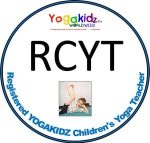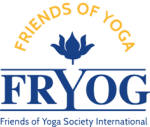The symptoms of Autism Spectrum Disorder are very individual to each child; however, there are some generalisations that include difficulties in communication, social interactions and the repetition of certain behaviours and motions (called “stereotyped behaviours”).
Noticeable behaviours occur early on in a baby’s development, such as a fixation on certain objects, limited eye-contact, and failing to respond to parental communication and emotional cues that indicate, for example, affection or distress.
It is estimated that 50% of individuals with autism have a learning difficulty yet, 70% of those with autism also meet diagnostic criteria for at least one other (often unrecognised) disorder, and 40% meet diagnostic criteria for at least two other disorders, mainly anxiety.
Yoga can be highly useful for those with Autism as long as it is delivered as part of a regular structured routine, with plenty of visual cues, limited distractions, and clearly defined boundaries so as to not cause distress.
Group classes do have benefits – it provides the opportunity for Autistic children to socialise with others to develop better communication skills, verbally and non-verbally. The biggest issue that Autistic pupils face is worry and anxiety which is very common with this condition. Inclusion and relaxation techniques are so important in terms of teaching SEN yoga groups – allowing children to learn various Yoga techniques to self-regulate their behaviour.
Using visual cards really help when verbal and linguistic cues are less useful. The Yoga poses themselves help create strength, coordination, balance and bodily awareness; furthermore, the kinaesthetic nature of learning through Yoga is great when other forms of communication are less effective. Children with Autism can have low muscle tone and gross as well as fine motor skills issues in terms of their development therefore asanas are, again, very useful.
With autism, children commonly have sensory processing disorders which can trigger challenging behaviours, Yoga helps to calm the nervous system’s response through breathing and relaxation.




